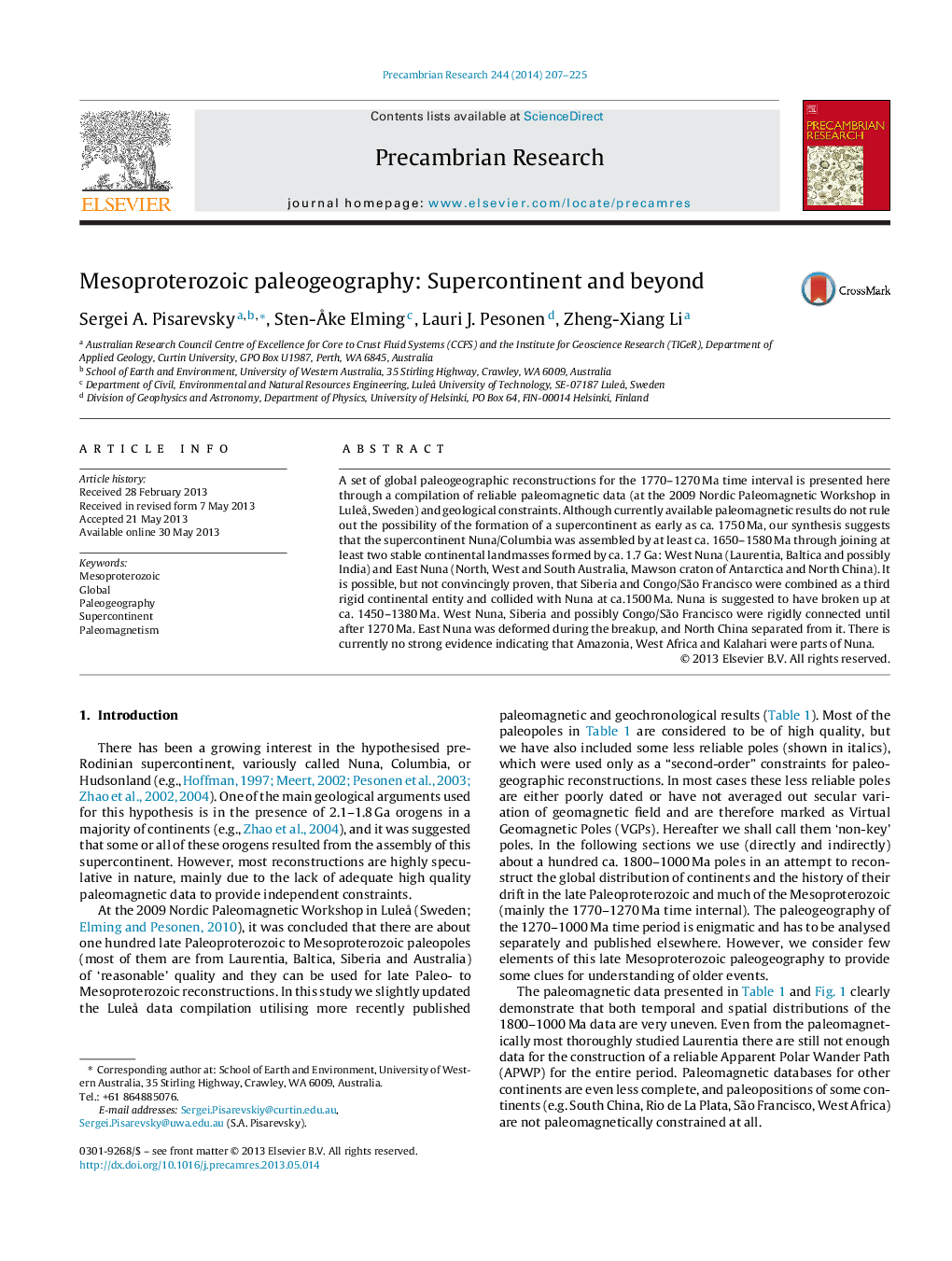| کد مقاله | کد نشریه | سال انتشار | مقاله انگلیسی | نسخه تمام متن |
|---|---|---|---|---|
| 4723049 | 1639630 | 2014 | 19 صفحه PDF | دانلود رایگان |
• We present a series of 1770–1270 Ma global paleogeographic reconstructions.
• The reconstructions are constrained paleomagnetically and geologically.
• Nuna/Columbia supercontinent assembled by 1600 Ma and broke up at 1400 Ma.
A set of global paleogeographic reconstructions for the 1770–1270 Ma time interval is presented here through a compilation of reliable paleomagnetic data (at the 2009 Nordic Paleomagnetic Workshop in Luleå, Sweden) and geological constraints. Although currently available paleomagnetic results do not rule out the possibility of the formation of a supercontinent as early as ca. 1750 Ma, our synthesis suggests that the supercontinent Nuna/Columbia was assembled by at least ca. 1650–1580 Ma through joining at least two stable continental landmasses formed by ca. 1.7 Ga: West Nuna (Laurentia, Baltica and possibly India) and East Nuna (North, West and South Australia, Mawson craton of Antarctica and North China). It is possible, but not convincingly proven, that Siberia and Congo/São Francisco were combined as a third rigid continental entity and collided with Nuna at ca.1500 Ma. Nuna is suggested to have broken up at ca. 1450–1380 Ma. West Nuna, Siberia and possibly Congo/São Francisco were rigidly connected until after 1270 Ma. East Nuna was deformed during the breakup, and North China separated from it. There is currently no strong evidence indicating that Amazonia, West Africa and Kalahari were parts of Nuna.
Journal: Precambrian Research - Volume 244, May 2014, Pages 207–225
